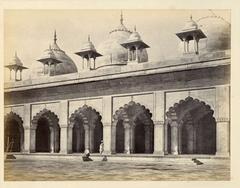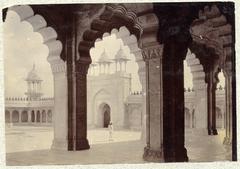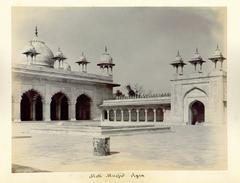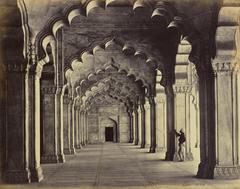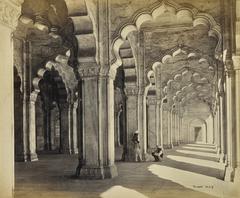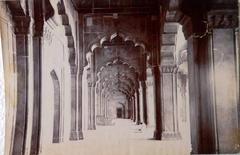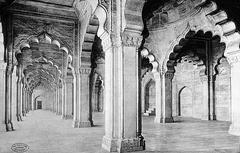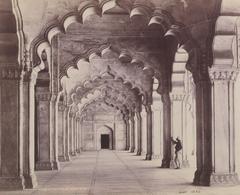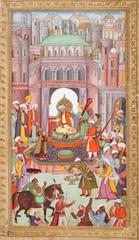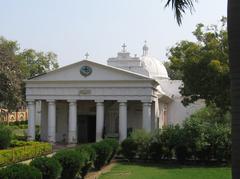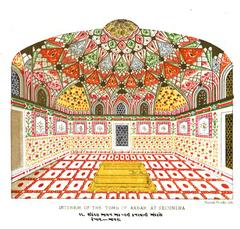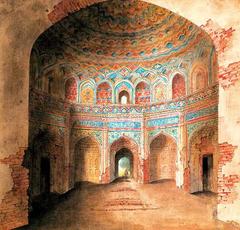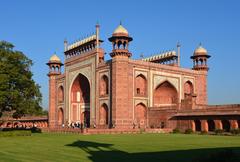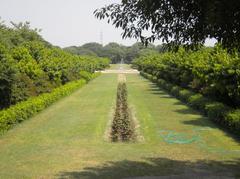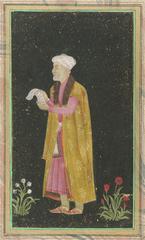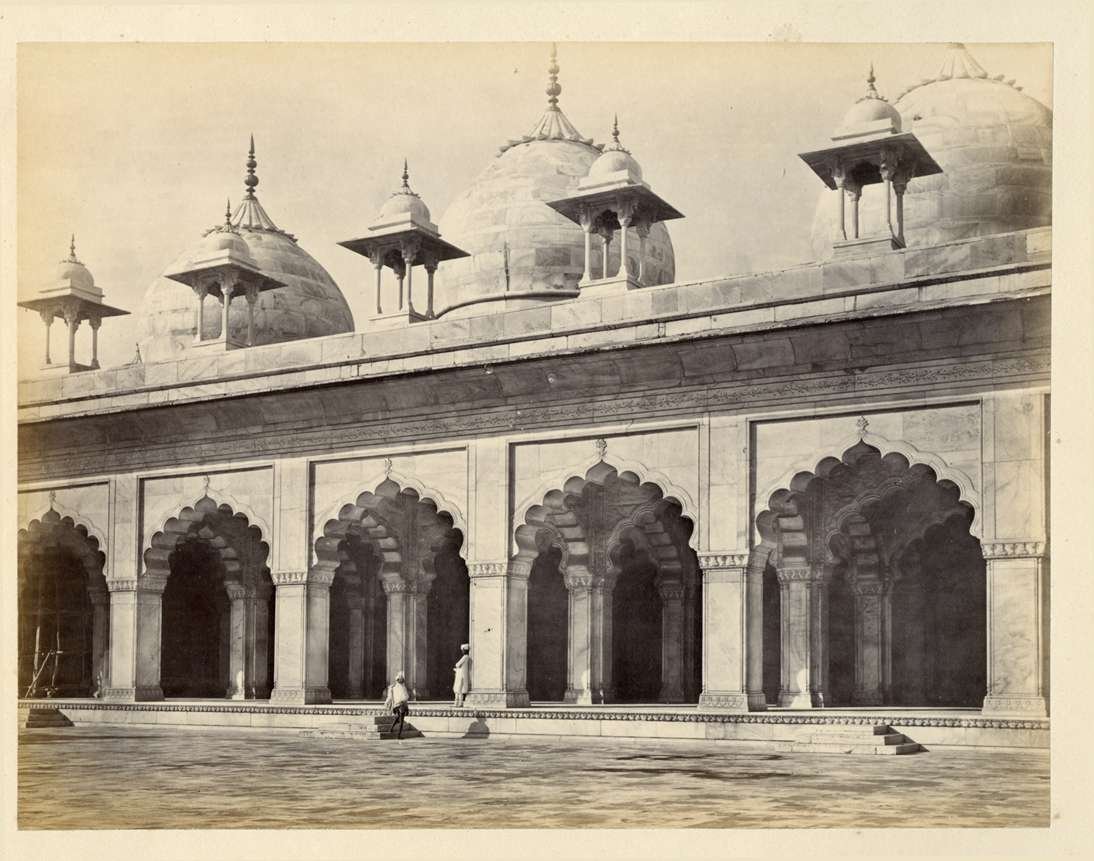
Moti Masjid Agra: Visiting Hours, Tickets, and Travel Guide
Date: 14/06/2025
Introduction to Moti Masjid Agra
Enclosed within the historic ramparts of Agra Fort, the Moti Masjid—aptly named the “Pearl Mosque”—stands as a sublime testament to Mughal architectural refinement and spiritual purpose. Commissioned by Emperor Shah Jahan between 1646 and 1654 CE, the mosque was envisioned as a private sanctuary for the Mughal royalty and courtiers. Its luminous white Makrana marble, elegant domes, and delicate ornamentation capture the essence of Mughal aesthetics, offering visitors a tranquil oasis amidst Agra’s monumental heritage.
Moti Masjid is not only architecturally significant but also played a vital role in the Mughal court’s religious and ceremonial life. It continues to draw history enthusiasts, architecture admirers, and spiritual seekers alike. This comprehensive guide provides essential insights into the mosque’s history, architecture, visiting hours, ticketing, accessibility, travel tips, and nearby attractions, ensuring an informed and respectful visit (SamanyaGyan, AgraTourism, TravelTriangle).
Table of Contents
- Historical Background
- Architectural Significance
- Spiritual & Cultural Role
- Visiting Information
- Accessibility & Facilities
- Travel Tips & Etiquette
- Nearby Attractions
- Visitor Experience
- Best Time to Visit
- FAQs
- Conservation & Legacy
- Visual Gallery & Virtual Tour
- Sources
Historical Background
Imperial Context and Patronage
Moti Masjid’s construction was initiated during the apex of Mughal power under Shah Jahan (1628–1658 CE). As Agra Fort served as the imperial residence, the mosque was conceived to reflect both the emperor’s devoutness and his passion for architectural splendor (SamanyaGyan). It was completed over several years, utilizing the finest artisans and materials, notably the same white marble as the Taj Mahal.
Purpose and Legacy
Primarily a private place of worship for the emperor, his family, and court officials, the mosque’s exclusivity underscored the close link between spiritual authority and sovereign rule. Over centuries, Moti Masjid has been preserved as a vital symbol of Mughal piety and artistry, now protected by the Archaeological Survey of India (Archnet).
Architectural Significance
Design and Layout
Moti Masjid epitomizes Mughal ideals of symmetry, balance, and serenity. Its principal features include:
- White Makrana Marble: The mosque’s gleaming marble exterior and interiors evoke purity and tranquility (Wikipedia, IndiaEasyTrip).
- Three Domes: The central dome is flanked by two smaller domes, all crowned with gilded finials.
- Courtyard: A spacious arcaded courtyard with a central ablution pool, integral to Islamic ritual practice.
- Prayer Hall and Mihrab: The western wall houses the prayer chamber, marked by an intricately carved mihrab (prayer niche) and marble jalis (latticed screens).
Ornamentation
While emphasizing simplicity, the mosque features fine inlay work, low-relief floral and geometric motifs, and Persian calligraphic inscriptions. Black marble lines delineate prayer spaces, and chhatris (domed kiosks) reflect a blend of Persian and indigenous influences (AgraTourism).
Spiritual & Cultural Role
Moti Masjid was central to the Mughal court’s spiritual life, hosting daily, Friday, and festival prayers. Its proximity to the Diwan-i-Am and Diwan-i-Khas symbolized the integration of governance and religion (TravelTriangle). The mosque’s tranquil atmosphere fostered contemplation, with its architectural purity amplifying the sense of divine presence.
Visiting Information
Location & Getting There
- Situated: Northern part of Agra Fort, about 2.5 km from the Taj Mahal and 4.5 km from Agra Cantonment Railway Station (veenaworld.com).
- Transport: Easily accessible by local taxi, auto-rickshaw, or public buses from major transit points.
Visiting Hours
- Daily: From sunrise to sunset (approx. 5:30 AM–6:30 PM). Early morning and late afternoon visits are recommended for optimal lighting and fewer crowds (hoteldekho.com).
Tickets
- Entry: Included with the Agra Fort ticket—₹50 for Indian citizens, ₹650 for foreign nationals, free for children under 15 (hoteldekho.com).
- Purchase: Available at the Agra Fort entrance or online for quick access (travelsetu.com).
Photography
- Permitted without flash; respect worshippers and avoid disruption.
Accessibility
- The mosque is accessed via steps; wheelchair access is limited, though some ramps exist within Agra Fort (travelsetu.com).
Facilities and Amenities
- Restrooms: Available within Agra Fort.
- Guides: Official guides, audio guides, and app-based tours enhance the experience.
- Shops: Souvenirs, water, and snacks can be found near the fort entrance.
- Security: Standard checks at entry points.
- No on-site dining: Nearby restaurants and cafes are accessible outside the fort (hoteldekho.com).
Travel Tips & Etiquette
- Dress modestly, covering shoulders and knees; women may wish to bring a scarf.
- Remove shoes before entering prayer areas.
- Maintain silence, especially during prayers.
- Avoid visiting on Fridays or during major Islamic festivals if seeking a quiet tour.
- Stay hydrated and carry sunscreen during summer.
Nearby Attractions
- Taj Mahal: Iconic marble mausoleum, 2.5 km away.
- Itmad-ud-Daulah’s Tomb: Renowned for intricate inlay work.
- Sheesh Mahal, Nagina Masjid, Musamman Burj, Diwan-i-Am, Diwan-i-Khas: All within Agra Fort (veenaworld.com).
Visitor Experience
- Duration: Plan 30–45 minutes for Moti Masjid, 2–3 hours for Agra Fort overall.
- Atmosphere: Serene and contemplative; respect the site’s sacred nature.
- Accessibility: Limited for wheelchairs; assistance recommended for those with mobility challenges.
Best Time to Visit
- Season: November–February offers cool, comfortable weather.
- Time of Day: Early mornings or late afternoons provide softer light and fewer visitors.
Frequently Asked Questions (FAQs)
Q1: What are the visiting hours?
A1: Sunrise to sunset, approximately 5:30 AM–6:30 PM.
Q2: Is there a separate ticket for Moti Masjid?
A2: No, access is included with Agra Fort entry.
Q3: Is the mosque wheelchair accessible?
A3: Access is limited due to steps; some ramps exist in Agra Fort.
Q4: Can I take photographs?
A4: Yes, but avoid flash and be respectful of worshippers.
Q5: What is the best time to visit?
A5: Winter months and early or late in the day.
Conservation & Legacy
Moti Masjid is protected by the Archaeological Survey of India (Wikipedia, Archnet). Restoration efforts focus on preserving its marble surfaces and intricate details. The mosque’s enduring influence lies in its blend of religious devotion and artistic achievement—a living legacy of Mughal culture (GuideTour).
Visual Gallery & Virtual Tour
- Images: Capture the mosque’s marble facade, domes, jalis, and courtyards.
- Virtual Tour: Explore Agra Fort and Moti Masjid virtually.
Sources and Further Reading
Plan Your Visit and Stay Connected
For a richer, more insightful trip, use the Audiala app for audio guides and interactive tours of Moti Masjid and Agra’s other historical marvels. Check official tourism websites for the latest updates on opening hours and visitor protocols. Follow us on social media for ongoing stories, travel tips, and new features.
